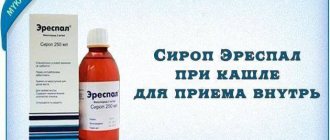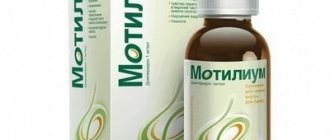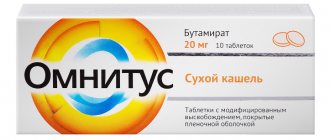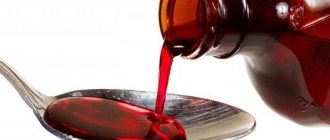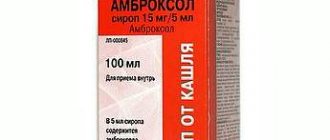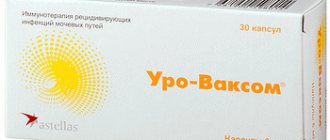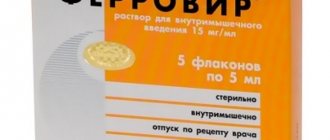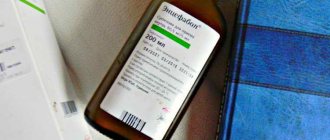Composition of the drug
The medicine Pantogam belongs to the group of nootropic drugs that help normalize brain function, improve memory, increase attention and mental performance.
Its main active ingredient is Pantogam 10.0 g, the auxiliary components are glycerin, citric acid, sodium benzoate, sorbitol, aspartame, purified water up to 100 ml. The product has a sweet taste and a pleasant cherry smell.
Contraindications
Syrup is usually well accepted by the body, but sometimes drinking it is contraindicated:
- Phenylketonuria (the medicine contains aspartame).
- Severe kidney and liver diseases (hopantenic acid is excreted from the body by these organs).
- In case of hypersensitivity to individual components of the drug.
Indications for use
The syrup is intended for oral administration. Indications for its use are the following conditions:
- cerebral palsy of varying severity;
- encephalopathy in children in the first days of life;
- mental retardation of varying severity, including behavioral deviations in children;
- delayed neuropsychic development;
- delayed speech development;
- hyperactivity syndrome with attention deficit;
- neurosis along with enuresis, nervous tics, stuttering;
- decreased concentration and memory impairment due to previous brain diseases and blockage of blood vessels with atherosclerotic plaques;
- schizophrenia as part of complex therapy;
- extrapyramidal disorders due to chorea, Parkinson's disease;
- epilepsy of varying severity as part of complex therapy;
- psycho-emotional stress;
- excessive mental stress in the child;
- neurogenic disorders of urinary function - pollakiuria, frequent false urge to empty the bladder.
The syrup is also prescribed to children as a prophylactic agent to prevent extrapyramidal disorders during long-term use of drugs from the group of antipsychotics.
Side effects
Typically, the drug in syrup form is well tolerated by patients, but in children with increased individual sensitivity to the components of the drug, some side effects may occur while taking it:
- from the digestive system - abdominal pain, nausea, rarely vomiting, salivation, bloating, flatulence, problems with stool;
- from the nervous system - increased nervous excitability, insomnia, irritability, in some cases, on the contrary, drowsiness, lethargy and apathy;
- on the skin - urticaria-type rash, dermatitis;
- allergic reactions - in rare cases, the development of angioedema and urticaria.
Overdose
When using Pantogam in doses higher than recommended, children may experience increased side effects, such as tinnitus and sleep disturbances. If this situation occurs, it is necessary to rinse the stomach, take activated carbon or other sorbents and immediately seek medical help.
Interaction with other drugs
The drug should be prescribed with caution with barbiturates and anticonvulsants. This is due to the fact that the syrup prolongs the duration of the therapeutic effect of these drugs, resulting in an increased risk of side effects and overdoses. When this drug is used simultaneously with antipsychotics, the risk of developing side effects of the latter is reduced. With the simultaneous use of syrup with Glycine and medications based on etidronic acid, the therapeutic effect of Pantogam is enhanced. Under the influence of this drug, the effect of local anesthetics (procaine) is potentiated.
Video
In this video you can get background information about the use of Pantogam in children, about its action, its effectiveness in the treatment of speech delay, enuresis, about possible side effects, and a comparison of Pantogam with other analogues is also mentioned.
Always remember that before using the drug, you must consult your doctor and carefully read the instructions. Self-medication is dangerous for your health and the health of your loved ones. Have you had experience using Pantogam syrup for children? Can you recommend Pantogam to others? Share your experience in the comments, your opinion is very important.
Directions for use and recommended doses
The syrup is intended for oral administration. The dose of the medicine is determined by the treating specialist purely individually for each individual child, depending on age, body weight, diagnosis and characteristics of the body. The maximum daily dose of the drug in this formulation is 30 ml; therapy begins with the minimum effective dosage, gradually increasing it if necessary. The daily dose of the drug is divided into 2-3 doses. According to the instructions for children of different ages, the dose of the drug is:
- from birth to 1 year – 5-10 ml of syrup per day;
- from 1 to 3 years – 5-12 ml of syrup per day;
- from 3 to 7 years – 7-15 ml per day;
- from 7 to 12 years – 10-20 ml per day.
Adolescents over 12-14 years of age are prescribed this drug in a different dosage form. The duration of treatment is determined by the doctor, but, as a rule, therapy lasts at least 2-3 months.
special instructions
The medicine in syrup form can be used to treat children from the first days of life according to indications and doctor’s prescription. Self-medication can pose a threat to the child’s health, so it is recommended to take the drug only with the permission of a pediatrician or pediatric neurologist. The syrup is not recommended to be taken simultaneously with sorbents and antacid drugs, since this drug interaction leads to a decrease in the absorption of the drug into the general bloodstream and a decrease in its therapeutic effect. If a child takes any medications on a regular basis, be sure to inform the doctor about this.
Reviews
Here are some reviews from parents whose children took Pantogam, which will to some extent help us analyze why this drug is prescribed to children, how effective it is, and what are the practical disadvantages of using this drug.
Tatyana writes that her child was prescribed Pantogam from the age of two months, but she was afraid to give her child the drug after reading the instructions. However, at the age of three, the girl’s seizures intensified and Pantogam was prescribed again, but in a higher dosage. She still recommends following doctors' recommendations.
Omelia tells the story of her daughter using Pantogam from 3 weeks of age for 2.5 months in combination with massage for weak motor reflexes. The treatment turned out to be completely effective.
Ekaterina describes her experience of using Pantogam: it was prescribed to her child due to increased muscle tone and dilated ventricles of the brain (according to the examination) as a drug that improves metabolic processes and blood circulation in the brain. The ventricles became smaller as a result of treatment.
Irina Ivanovna notes that when using Pantogam, her child became more excitable and sleep was disturbed, so after consultations with many neurologists, she had to stop the drug, given this effect. He advises looking at the child’s reaction to the drug and not using it in such cases.
Elena writes that her child was prescribed to take Pantogam for a chorionic plexus cyst and ischemic syndrome. The drug was taken, but no particular effectiveness was noticed, at least in terms of external behavior. The cyst had resolved by six months.
Opinions vary and are personal and situational in nature. Indeed, the drug is effective when it is used strictly according to indications and a certain course of treatment. It must be prescribed by the attending physician, and its use must be supervised by him.
Analogues of the drug
Instead of Pantogam syrup, you can use the following medications:
- Pantocalcin is a complete analogue of Pantogam. In the form of syrup, it can be given to babies from birth; in tablet form, the drug is allowed for children from 3 years of age. Pantocalcin has the same indications for use as Pantogam, but it provokes similar undesirable effects.
- Calcium hopantenate is a domestic medicine that is available in tablets. They can be given to children over 3 years of age. The differences between the two medications are insignificant only in the composition of the additional components, which should be taken into account by people prone to allergies.
- Cortexin belongs to Pantogam substitutes in the therapeutic group. The medicine is produced in the form of a lyophilized powder complete with a solvent. The medication can be prescribed to infants from the first days of life. Injections are not given to pregnant or breastfeeding women.
- Piracetam is a substitute for Pantogam in the clinical and pharmacological group. It is produced by a number of Russian companies in the form of tablets, capsules, and injections. This is a nootropic drug that can be prescribed to patients of different age groups. Piracetam is allowed for pregnant women.
Doctors' opinions on the use of medication in children
Experts have long and willingly prescribed Pantogam syrup to children. This is a relatively safe drug that avoids many problems in neurology and sometimes psychiatry.
The most common reason for negative reviews of a drug is the high likelihood of disinhibited behavior, which is attributed to side effects. Some children complain of headaches and nausea after taking it. But all this can be avoided if you choose the optimal dosage, which directly depends on the professionalism of the doctor. The use of the drug for infants is also justified if indicated. In some cases, children outgrow pathologies, but it is better to play it safe and take the prescribed course.
Storage conditions
It is recommended to store the syrup out of the reach of children in a cool, dark place. The optimal storage temperature should not exceed 25 degrees. After opening the bottle, the medicine should be kept in the refrigerator for no longer than 6 months, after which it should be disposed of, even if the medicine has not yet run out.
The shelf life of the medicine in syrup form is 2 years from the date of manufacture and is indicated on the packaging. After this period, the drug cannot be taken orally.
